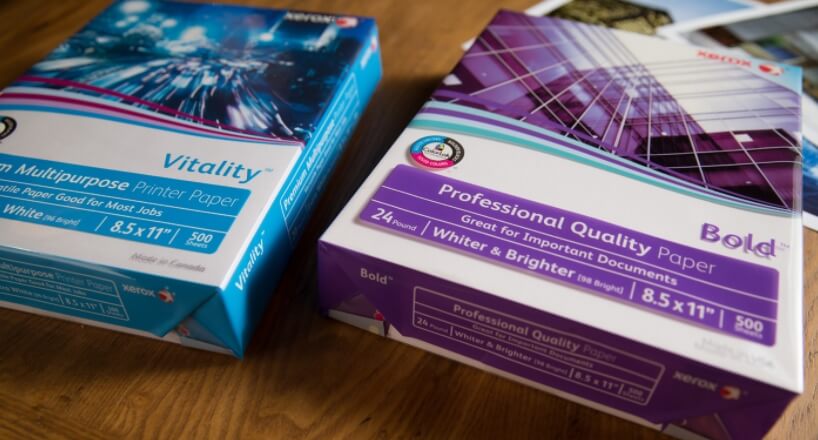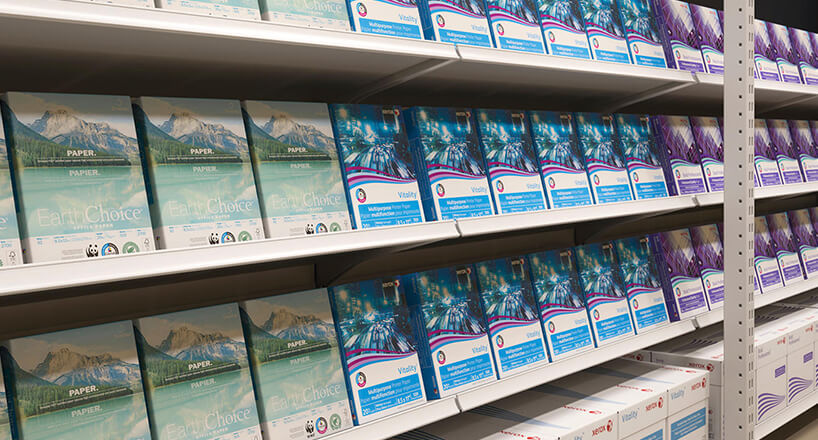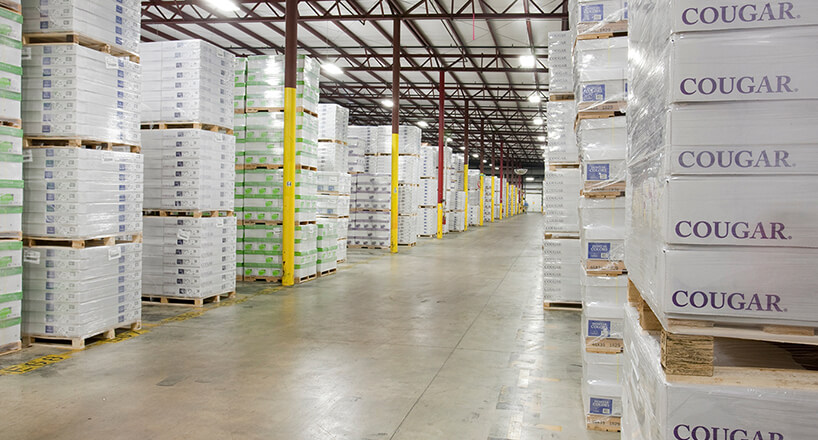The Secret Ingredient in Cougar® Paper
Rothschild Paper Mill has an uncompromising devotion to the Cougar® brand.
Ask any Rothschild Mill employee what they do for a living and they likely won’t say that they work at a paper mill. Instead, they might throw their shoulders back, stand a little taller and say that they work at the Cougar Mill, the paper mill that makes Cougar® paper. One could even say that the secret ingredient in Cougar paper is the people behind the product and their passion for making Cougar paper.
Clearly, when it comes to paper mills, Rothschild is a different breed altogether. The culture is infused with an uncompromising sense of pride and passion for being the sole mill in charge of all production of Cougar, the premier brand at Domtar Paper.
For decades, Rothschild has ingrained a ‘don’t mess with Cougar’ mantra. “It’s all about maintaining the quality, the mystique, the touch and feel that makes Cougar second to none. Pride and passion are put into everything we do,” says David Faucett, general manager of Rothschild Mill.
The 100-year old mill, located in the Green Bay Fox River Valley area along the Wisconsin River, has been manufacturing Cougar paper since the brand’s launch in 1972. Over the years, investments have been made to further elevate the quality of the paper and create efficiencies in the process. More customers than ever before can now have a paper that provides rich detail, vibrant color and a luxurious feel.
To ensure excellence on every level, the mill created a quality leadership team including hourly and salaried employees with the sole mission of training new hires and instilling the mill’s high standards. It’s a critical part of the culture and it puts the celebration of a superior product in the hands of the employees.
Hourly workers even go on customer visits to hear firsthand from print shops and merchants about what’s important to them and what they see. Not surprisingly, when the merchants rave about the runability and printability of Cougar, that input feeds the pride and passion machine.
While customer praise goes a long way, Faucett never loses sight of the fact that their job is to manufacture the best product, end of story. “No product goes out unless it’s perfect,” says Faucett. “We had a record year for quality in 2018 and we’re on track to have an even better year in 2019.”
This level of dedication is rare indeed. So why does it feel so second-nature to Rothschild? At its core, this unique mill is a close-knit team that operates more like a family – and sometimes is. It’s not unheard of to have as many as three generations working under the Rothschild roof at the same time. Everyone looks out for each other and there’s pride in that, too.
Even the facility itself has Cougar written all over it. Posters, logos, mugs, shirts, hats and more reinforce the team spirit that permeates the mill. When there’s a celebration, it feels more like a college pep rally.
While not at work, the employees use their pride and passion to fuel positive change in other ways. They’re devoted to their community, whether they’re sitting on a county board, teaching papermaking in schools, lending a hand with a Habitat for Humanity project or volunteering and providing leadership with river cleanup.
Rothschild also gives back through their laser-focus on renewable energy and the environment. Unlike most paper mills, Rothschild owns a dam that provides electrical generation and water intake. “It’s the most renewable form of energy. There are no emissions. You’re just taking advantage of the force that’s out there. When you talk about sustainability and manufacturing a product from renewable energy, from that perspective, it’s as good as it gets,” says Faucett.
The mill also has partnerships with LignoTech, a world leader in sustainable alternatives to oil-based chemicals, and WE Energies, the utility giant that provides electricity to portions of Wisconsin and Michigan’s Upper Peninsula.
This commitment to making things better comes naturally for the employees at Rothschild. They thrive on hard work, family values and taking pride in a job well done, much like the generations that preceded them.
Faucett sums it up best by stating, “It’s 100 years of evolving. We’ve been blessed with good people, good raw materials and good equipment. But just about any mill can have any of those things. It’s the culture and pride and people – the togetherness – that make a difference.
The people who came before us gave us this opportunity and it’s our obligation, our responsibility, to carry that on and give the next group the opportunity to run with it.”










